The One True Way™ to watch Star Wars is a hotly debated topic in many circles. I did my best to give an overview of the “Flashback Order” back in 2015 – but there have been new movies released since then! So I’m going to walk you through the full watching order, episode by episode, so you can see why this is the best and know what to look out for.
Please note: this list contains only spoilers, but for the things that the entirety of Western culture already knows anyway.
The Beginning Of It All
Episode IV – A New Hope (1977)
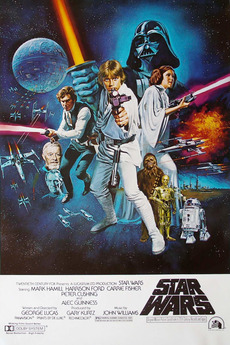
We start with the original Star Wars. It’s a natural place to begin, because it’s the beginning. It sets up the universe nicely and provides a very solid story. It’s a much better beginning than Episode I, and maintains all of the spoilers (because they weren’t written yet when the film was released). There’s an incredible attention to worldbuilding throughout, and it’s a very rewarding way to begin.
Watch for: The Hero’s Journey. Oft-cited as the most compelling example of the Hero’s Journey in film, Lucas himself calls out Campbell’s work in behind-the-scenes interviews, detailing how he used the monomythological pattern for the story of Luke. That story holds its most pure expression here.
The Big Question
Episode V – The Empire Strikes Back (1980)
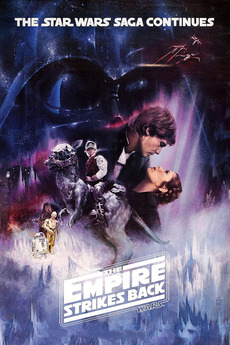
Watching this film in the second position preserves its original culture-defining nature in many ways, including maintaining the narrative impact of the most critical twist of cinema history. It also preserves the more minor surprise of Yoda’s true nature. The lesser surprise of Palpatine’s identity in the prequels can be retained if you watch the theatrical VHS or DVD versions, or the Despecialized Editions.
Placing Empire before the prequels also gives a narrative weight to the tension, drawing it out like it hasn’t been since 1980.
Watch for: Empire asks the biggest question in the franchise: Who is Vader? With the Flashback Order, we get to see the answer to that question played out over the next three films, and yet we’re still wrestling with the real answer in the Sequel Trilogy.
The Flashback Begins
Episode I: The Phantom Menace (1999)
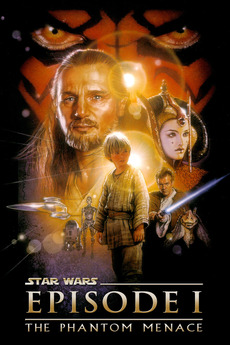
Now we diverge from the release order for a quick “flashback.” As we venture through the prequels, viewers are given the opportunity to wonder- is Vader lying? Watching Episode I in the third position also diminishes the role of Jar Jar Binks and provides some back story where it matters most. We’re only one episode removed from Luke’s boyhood on Tatooine, and seeing Anakin’s here draws some clear parallels.
Watch for: This film drops in some of the best action in the prequel trilogy, amidst all of the political maneuvering and slapstick. The Podrace and the lightsaber duels are truly incredible.
The Descent
Episode II: Attack of the Clones (2002)
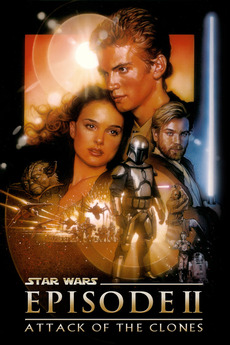
The weakest of the Star Wars franchise so far, burying this film in the middle instead of near the beginning or the end weakens the bite of its bad romance dialogue and provides a base that will make both of the following entries from the original Lucas saga shine all the brighter.
Here we do see much of the beginnings of who Vader will become, making its new place more poignant. It’s gone from being a nondescript second film to being a hinge upon which the entire original saga can turn.
Watch for: The shading of who Anakin Skywalker is becoming begins to grow in this episode. Notice even the small places where he’s beginning to look down a path he shouldn’t be.
The Wild Card
Clone Wars (2003)
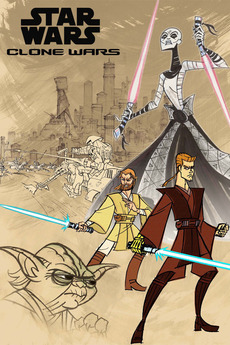
Our first newcomer to the list! Not to be confused with The Clone Wars, the CGI film-become-series with a shockingly similar name, this 2D Genndy Tartakovsky delight is short and brilliant.
It is the best piece of Star Wars content written about the prequel era without a doubt. This short collection of animated works (all only a few minutes long) bridges the gap between Episode II and Episode III and provides some interesting character development and incredible action for all the characters. It might even be worth watching instead of Episode II, if you’re pressed for time.
Watch for: Chapter 12 and 13 of “Season 2,” wherein Mace Windu wordlessly takes on an enormous mass of battle droids, on his own, without a lightsaber. It’s beautiful both narratively and technically.
Answers
Episode III: Revenge of the Sith (2005)
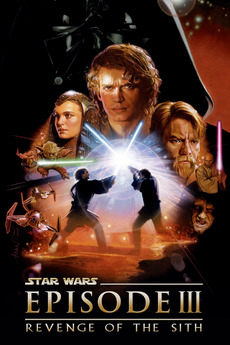
The best of the prequel trilogy, it finally answers the question demanded by Vader’s shocking reveal in Empire. It makes Luke’s subsequent acceptance in Jedi seem all the more realistic as a result, and placing Episode III after that big reveal retains the audience’s suspension of disbelief that he didn’t believe him in the first place.
In addition, Luke’s seeming-flirtation with the dark side at the beginning of Jedi is made more threatening and deep through seeing Anakin go through some of those similar threads here.
Watch for: As Lucas begins to wrap up his prequels, he starts weaving in continuity from the Original Trilogy, not as fanservice, but as little bits of worldbuilding for the future. A lot of it connects directly to Jedi.
The Final Conflict(?)
Episode VI: Return of the Jedi (1983)
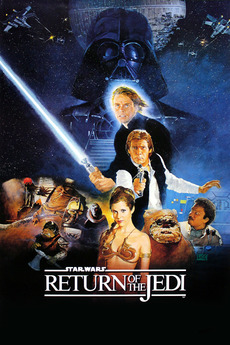
Placing Jedi after the prequel trilogy not only elevates the prequels, it also elevates Jedi itself! Originally the weakest of the original trilogy, so many threads from the prequels resolve here that it feels like a much more dramatic payoff. The finality with which this episode closes out the original story of the Skywalker family feels much more grounded by the prequels’ new positioning, and seeing the rise and fall of Darth Vader essentially compressed into two films rather than separated by four makes it all the more potent.
In addition, the dramatic thread of Vader’s final action in Jedi is more powerful, since we saw him in a similar situation in Palpatine’s chambers during the climax of Sith just a single film earlier.
Watch for: The ways in which Luke seems to be following in his father’s dark footsteps. It’s a subtle, easily-missed detail that adds a lot of depth to the storyline.
The End of an Era
Rogue One: A Star Wars Story (2016)

Our first real foray outside the Skywalker family story, Rogue One is an excellent film that actually transitions between Episode III and Episode IV. However, the dramatic tensions of those particular stories should remain where they are, leaving this film as a bookend that ironically leads us right back into Episode IV. It’s something of an intermission in the storyline, a natural break and decision point from which we could venture back to the beginning or forge forward.
Watch for: All the ways that this film does a prequel story correctly.
The Next Generation
Episode VII: The Force Awakens (2015)
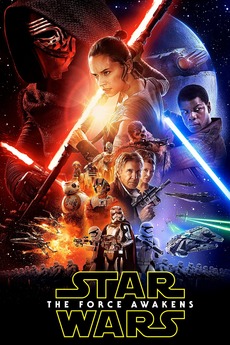
This film essentially kicks off an entirely new cycle within the Star Wars mythos, but there are enough connective threads to the original trilogy to merit its placement in this list rather than a spot on a new list.
Some would deride The Force Awakens as a clone of A New Hope, but the distinctions and narrative echoes are interesting; in addition, the kickoff for the new generation of films is aided by its strong ties to the past.
Watch for: Well, it’s tough to tell since we don’t know what narrative threads will be carried through into The Last Jedi, so we’ll update this article once we know more.
May the Force Be With You
So there you have it. For some more in-depth reasons why the prequels should be watched between Empire and Jedi, check out our original article about the Flashback Order. But no matter what, enjoy your foray into that galaxy far, far away.
Have you watched the series in this order? Let us know below! And don’t forget to check back in this winter when we take a look at The Last Jedi.
• • •
An early draft of this article appeared, in list form, on my Letterboxd page. If you’re on Letterboxd, follow me and I’ll follow you!
Thanks for reading Redeeming Culture.

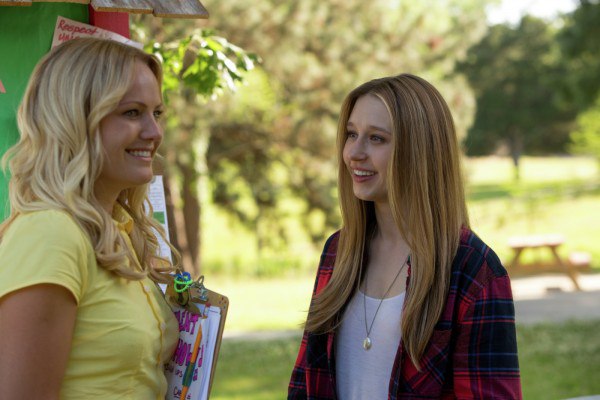
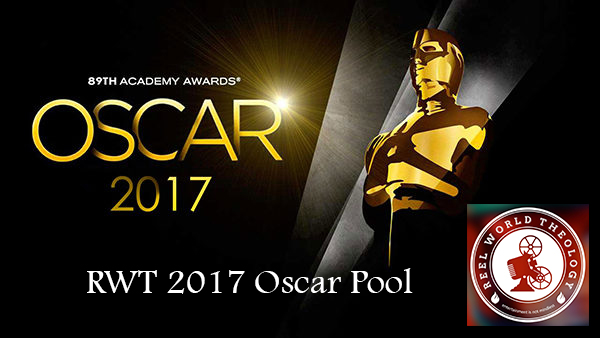
Saw this linked on the Reformed Pub so gave this a read. I can see watching it this way, but the inconsistent style of going from old to new might be distracting.
I really wasn’t all that stoked about Rogue One (easily forgettable characters and terrible music) so it’s hard for me to work that one in. Same with the animated Clone Wars, if only because of the different style. To be honest, I’m still trying to accept Ep.7 a year later… haha
Thanks for stopping by!
I have to give Rogue One’s music a lot of leeway, since Michael Giacchino only had two weeks to score the whole thing. I enjoyed the film, but I have to admit that it’s not really held up to my original interest over the five months it’s been out. I like it for its worldbuilding, but it’s not as strong as I would have (and even did) assert last December.
As for the style (old/new); it’s not as distracting as you might think; the quality is bad in different ways (and actually not that bad at all if you watch the Despecialized Editions of the OT) – that is, the practical effects of the OT are sometimes distractingly bad, but the CGI of the PT are sometimes distractingly bad. It’s a give and take that actually holds up pretty well.
And yeah, Clone Wars is pretty different. But it’s so good!
Thanks again for your comment!